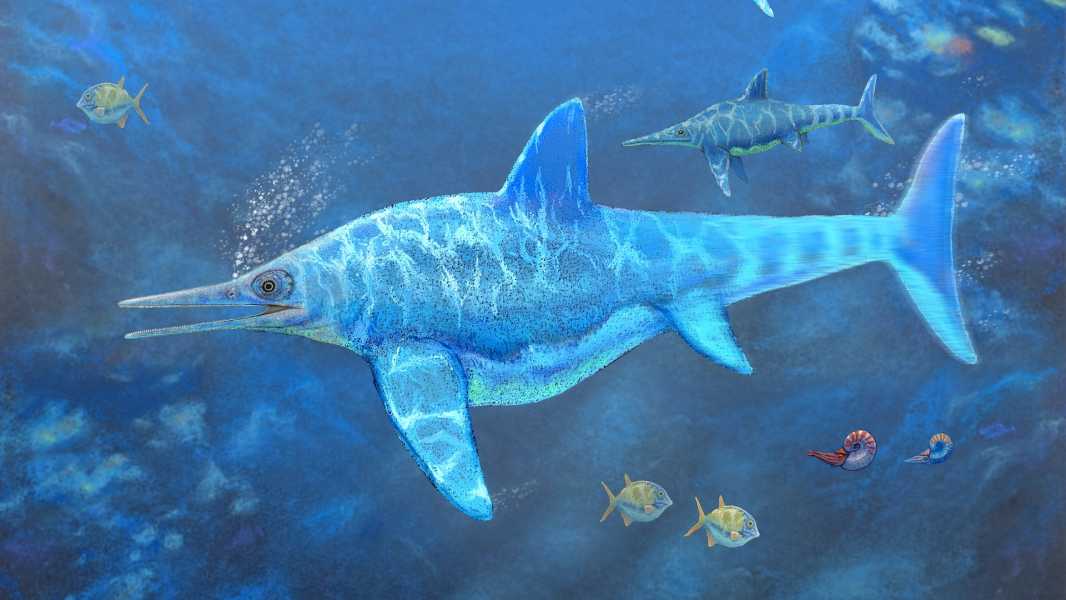
An illustration of a pregnant female ichthyosaur (Myobradypterygius hauthali), known as Fiona, swimming 131 million years ago in what is now Chile. (Photo by Mauricio Alvarez)
A CT scan of a fossilized marine reptile found during pregnancy has revealed a startling fact – inside its fossilized remains were two fetuses.
“Twins! She has another baby,” Judith Pardo-Perez, a paleontologist at the University of Magellan in Chile who first discovered the fossil in 2009, told Live Science, adding that she plans to publish more details about the discovery in an upcoming scientific paper.
Sixteen years ago, scientists conducting research in Torres del Paine National Park in southern Chile stumbled upon a paleontological treasure when they discovered the fossilized remains of a pregnant ichthyosaur, a dolphin-like predator that roamed the seas throughout much of the Mesozoic Era (252 to 66 million years ago).
Researchers initially reported that the ichthyosaur was preserved in amazing detail and included the skeleton of an unborn fetus about 6 inches (15 centimeters) long.
The fossil was first discovered in 2009, when Pardo-Perez was a graduate student. When she returned to the site a year later, she noticed unusual bones between the main fossil's ribs, indicating the presence of a fetus — but it wasn't until 2022 that the pregnant female ichthyosaur, dubbed Fiona, was fully excavated.
Now, Pardo-Perez and her colleagues have conducted a comprehensive analysis of the fossil. Their results were published Feb. 25 in the Journal of Vertebrate Paleontology.

The ichthyosaur, named Fiona, was approximately 11.5 feet (3.5 meters) long.
The ichthyosaur, which lived about 131 million years ago, is thought to have been about 11.5 feet (3.5 meters) long. Its remarkable preservation is due to the rapid burial of the body in sediment, coupled with a lack of scavengers, likely due to low oxygen levels on the seafloor, according to the study. Scientists identified it as Myobradypterygius hauthali, a species previously known from other fossils.
The find represents the third case of a pregnant ichthyosaur from the Cretaceous period (145 to 66 million years ago), although pregnant ichthyosaurs dating from the Jurassic and Triassic periods have also been discovered.
Sourse: www.livescience.com





